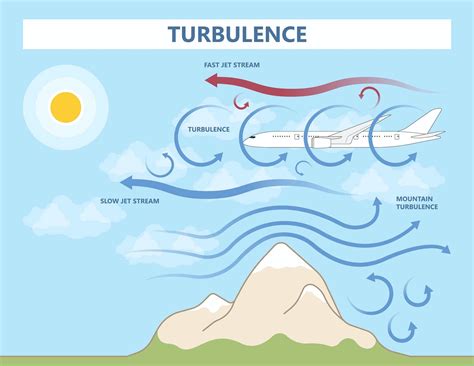Aviation experts and frequent travelers alike have been abuzz with discussions surrounding the increasing frequency of Clear Air Turbulence (CAT). This phenomenon, characterized by turbulence without visual indicators such as clouds, has been attributed primarily to climatic changes, with significant focus on the behavior of jet streams. The question on many minds is whether climate change is indeed making our skies bumpier, and if so, how the aviation industry is adapting to this new reality.
One crucial factor implicated in the rise of CAT is the intensified jet stream, driven by global climate dynamics. Jet streams, the fast flowing, narrow air currents found in the atmospheres of some planets, including Earth, are becoming stronger and more erratic with the current warming trends. As the planet warms, particularly the poles, the temperature gradients intensify, consequently altering the behavior of these air currents. While some argue that a warming planet might weaken these streams due to smaller temperature differentials, the reality is more nuanced. Increased moisture in the tropics, as warming continues, plays a substantial role in enhancing jet stream activity.
For example, findings from recent climate models involving researchers like University of Chicago’s Professor Tiffany Shaw indicate that increased moisture levels above the tropics significantly drive the density contrast intensifying the jet streams, thus making air travel more turbulent. This analytical process underscores the importance of understanding how multiple climatic factors interweave, impacting jet stream behavior and thereby CAT incidents. Recent simulation studies further validate these findings, showing consistent patterns in enhanced turbulence over decades, suggesting that this is more than just a short-term trend.
Pilot reports and anecdotal evidence also lend support to this increasing trend. Pilots like those contributing to discussions emphasize how procedural changes in flight descent profiles contribute to the perception of increased turbulence. Continuous Descent Profiles (CDPs), involving prolonged flight at higher altitudes before descent, are designed to reduce fuel consumption and environmental impact but may lead to enhanced perceptions of turbulence as planes remain in more turbulent strata for longer durations. Such nuanced operational changes can easily be perceived as climate-induced turbulence without a thorough understanding of flight procedures.
However, not all turbulence can be directly pegged to climate change. Advances in aviation technology and better predictive capabilities have enabled pilots and airlines to better navigate and report turbulence. Flight dispatch teams, armed with advanced meteorological data, can now provide more accurate routing information, allowing pilots to avoid known turbulent zones more effectively. This raises the question of whether the perceived increase in turbulence is a result of better detection and reporting rather than actual climatic changes.
Moreover, there’s extensive debate over the severity of CAT incidents. While the frequency might be on the rise, the intensity often remains within manageable limits due to rigorous design standards of modern aircraft. Commercial airliners are built to face significant stresses, far beyond what passengers might experience or perceive during a turbulent flight. While incidents of severe turbulence causing loss of aircraft control are incredibly rare, even historically, the advancements in aircraft structural integrity protocols ensure that such events remain isolated and manageable.
In conclusion, while climate change might be influencing the frequency and perhaps erratic nature of clear air turbulence, other factors like improved flight descent profiles, better turbulence prediction, and navigational adjustments should not be discounted. As the aviation industry continues to innovate and adapt to changing environmental conditions, both in the skies and technologically, passengers can expect safer and more efficient flights. The amalgamation of better predictive models, advanced aerospace engineering, and procedural innovations holds the key to mitigating the impacts of increased CAT, ensuring that the skies remain as safe as they are efficient. For travelers, the onus remains on listening to in-flight instructions, particularly about remaining seated with seat belts fastened, to enhance personal safety amidst this evolving aerial landscape.


Leave a Reply